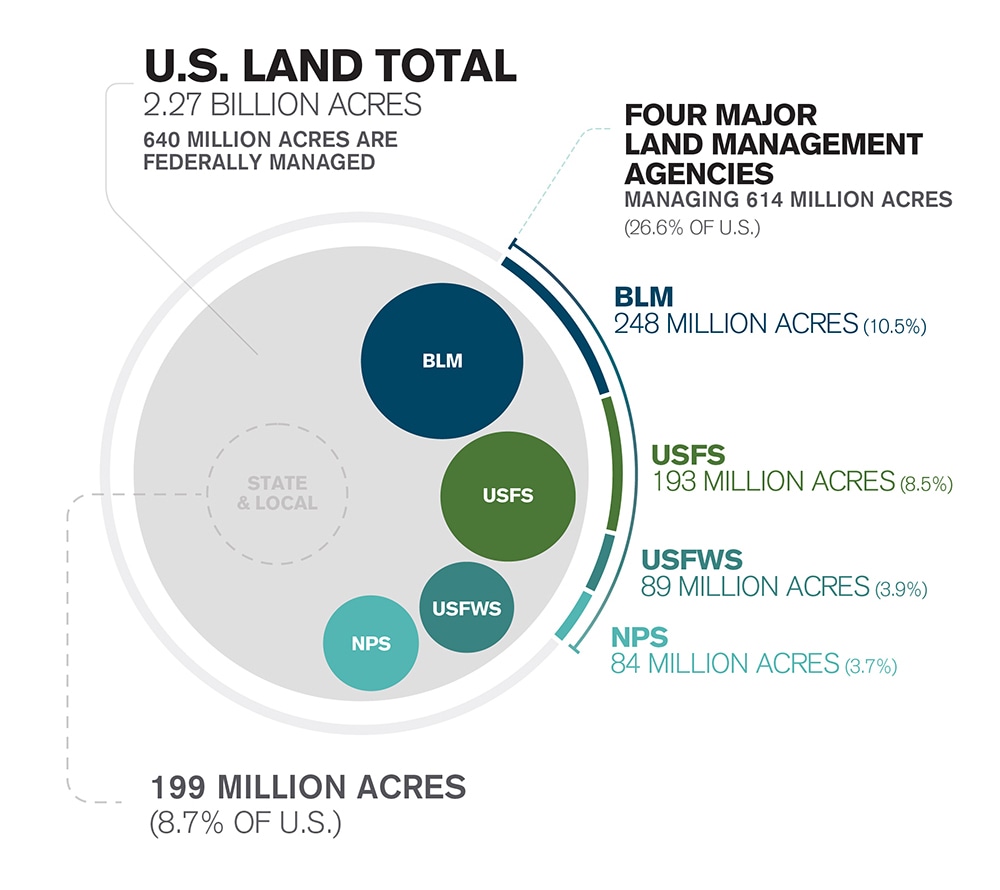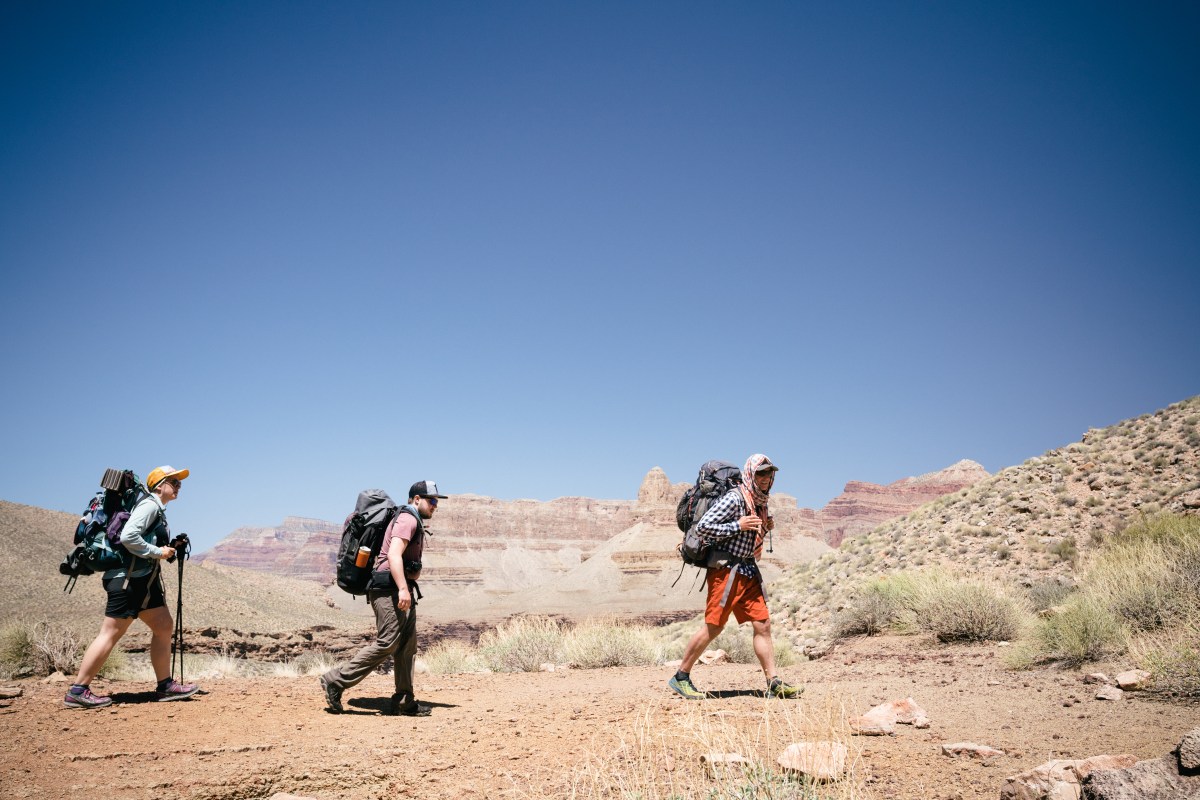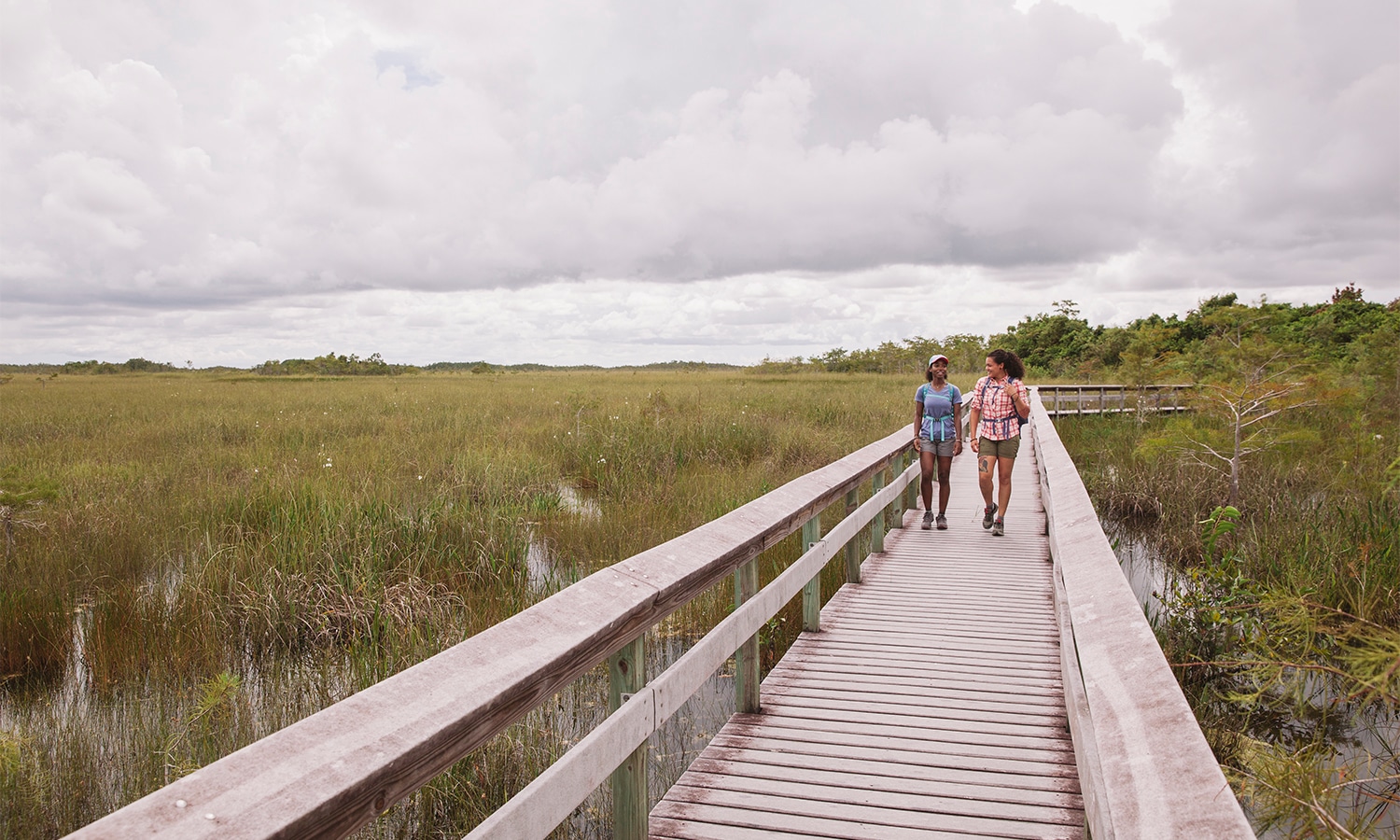In the last few years, the term “public lands” has been spoken about with increasing regularity. You’ve likely seen it in news articles, documentaries and even advertising. But what exactly are public lands?
In the broadest sense, they’re areas of land that are open to the public and managed by the government. You can think of it as land you own (and share with everyone else in the United States). There are three types of government that manage public lands: federal, state and local. Remember, public lands aren’t just national parks—your state and local city parks count, too. And there’s a difference among them. Federal public lands are held in trust for all Americans and the goal is to manage the land for the long-term health of both the land and citizens, according to The Conservation Alliance. Many federal agencies manage public lands for multiple uses, from recreation to timber, but in some form or another every American has a say in how these places get used. For states, it’s hard to generalize. For some lands, there’s no requirement to involve citizens in public land management decisions.

Map courtesy of the Outdoor Alliance.
To better understand our public lands, it’s important to know how they were established. In the late 1700s, according to the Public Lands Foundation, the U.S. government claimed millions of acres of land from the Native Americans. At the same time, the government claimed land previously settled by Mexico, Canada, Russia, Spain, France and England. It was in 1781 that New York state gave the federal government all of its “unsettled” land west of the colony to the Mississippi River. In just over 20 years, all land west of the colonies followed suit and was considered public domain. Eventually the government acquired 1.8 billion acres, most of which were later transferred to individuals, corporations and states to create things like schools, railroads and ranches.
The late 1800s brought about “a preservation and conservation movement,” according to a Congressional Research Service report. President Lincoln deeded Yosemite Valley to the state of California for a public park in 1864. And in 1872, President Grant signed a law making Yellowstone the first national park in the nation. Over the next 100-plus years, 59 strictly regulated national parks followed, as well as a myriad of other public lands with differing designations.

Infographic courtesy of Outdoor Industry Association
Today there are four major federal agencies that manage around 610 million acres of public land held by the U.S. government:
- Bureau of Land Management (BLM): 248 million acres or 10.5 percent of all land in the country
- U.S. Forest Service (USFS): 193 million acres or 8.5 percent of the country
- U.S. Fish and Wildlife Service (USFWS): 89 million acres or 3.9 percent of the country
- National Park Service (NPS): 84 million acres or 3.7 percent of the country
Each of the federal agencies has different objectives and policies for the ways in which they take care of the land. Within the national park system alone, there are 28 designations. We won’t get into all of the details but here’s a quick primer on the types of public lands you’re most likely to encounter:
National parks: Only able to be created by Congress, this type of land is protected for future generations, while still offering recreation for current generations. Although there are 60 national parks, including popular destinations like Great Smoky Mountains and Grand Canyon national parks, there are 417 units in the broader national park system, which covers more than 84 million acres in all 50 states and the District of Columbia. They’re protected for their natural, historical and cultural resources and managed by the park service.
National forests: Often located near national parks, our 154 national forests and 20 grasslands are managed by the USFS with a multiple use concept—so in addition to recreation, lumber, grazing and mineral extraction are allowed. Eighty-four million people use more than 158,000 miles of Forest Service trails each year.
National conservation land: Designated by Congress, around 34 million acres have been set aside as national conservation areas for scientific, cultural, historical and recreational purposes. They are managed by the BLM.
National monument: These 155 national monuments are designated by the president or Congress for specific natural, cultural or historic features—and more than two dozen have gone on to become national parks. They are managed by the NPS, USFS, USFWS, BLM and National Oceanic and Atmospheric Administration (NOAA).

South Rim, Grand Canyon
Wilderness: In 1964, the Wilderness Act created the National Wilderness Preservation System, allowing Congress to protect pristine wild land, untamed by humans. This is the highest level of protection for federally managed public lands, and more than 760 wilderness areas totaling more than 109 million acres hold the title. They are managed by the NPS, USFS, USFWS and BLM.
National recreation areas: Land near large reservoirs can be designated for swimming, paddling, fishing and boating use. The NPS alone manages 18 national recreation areas and BLM and USFS manage dozens more.
Wild and scenic rivers: This designation preserves free-flowing rivers that haven’t been altered and keeps the rivers and the lands surrounding them in their natural state. Today, the National Wild and Scenic Rivers System protects 12,754 miles of rivers—less than 1 percent of American rivers. They are managed by the NPS, USFS, USFWS and BLM.
State parks: These parks can’t be overlooked. As of 2018, there are 8,565 state park areas comprising 18,694,570 acres in the United States, according to the National Association of State Park Directors (NASPD). Each park is managed by the state itself.
City parks: From Griffith Park to your local playground, city parks are some of our most beloved. Among the country’s 100 biggest cities, more than two million acres of city park land exists, according to a 2018 report from The Trust for Public Land.
National Public Lands Day, Sept. 22, is the perfect time to enjoy your land (especially because national parks are free). And the perfect time to bring a friend along.


